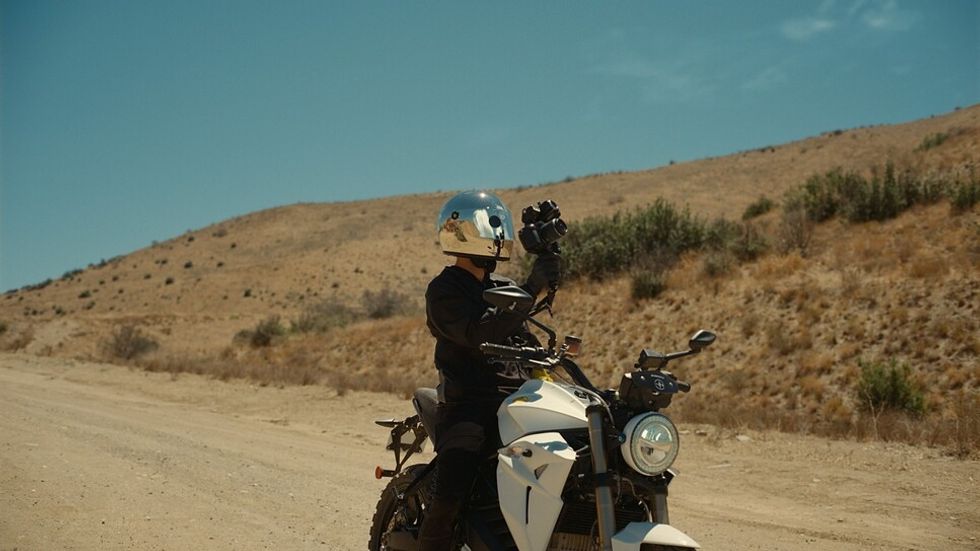11 Famous Directors Who Write Their Own Screenplays
Learn both crafts from these writer-directors.
Dec 11, 2024
In Hollywood, we love a multi-hyphenate who covers multiple roles on set. Of course, the most esteemed of that ilk is the writer-director.
Since the film is often seen as a director's medium, where auteurs put a stamp on their work, the ability to write and direct your screenplay only furthers that narrative.
Today, I wanted to go into some of my favorite writer-directors and take a look at some of their best films.
So, without further ado, let's dive into these 11 directors who write their screenplays.
1. Christopher Nolan

Dunkirk behind-the-scenes
Credit: Warner Bros. Pictures
Nolan is probably the most powerful director in Hollywood right now. The thing that I adore about him is that he's usually generating his own movies based on ideas that captivate him. That imagination translates well from the page to the visuals in his movies.
2. Nancy Meyers

Something's Gotta Give
Warner Bros.
I've always had a soft spot for Nancy Meyers. She creates these wondrous worlds that feel so lived in, and she writes characters that also feel relatable. I do not think she gets enough credit for her incredibly particular and planned-out people and the sets she builds around them.
3. Quentin Tarantino

Pulp Fiction
Credit: Miramax
The ultimate auteur, Tarantino is so incredibly singular it's hard to imagine him directing anyone else's screenplay, even though he shares credit on Pulp Fiction. His voice is great, and I think it's so interesting to look at the movies he wrote that he didn't direct to see how well they translate to the scene against the movies where he had control and got to bring those stories to life.
4. Jordan Peele

Nope
Credit: Universal PicturesPeele came out of TV comedy with a vengeance and is one of those directors whom I have to see his movies in theaters. I was actually at the Get Out premiere in DTLA, and about ten minutes in, I knew the whole landscape of cinema had changed.
5. Hayao Miyazaki

Spirited Away
Credit: Studio Ghibli
Up until last year, I had never seen any Hayao Miyazaki movies. But when they had an exhibit on him at the Academy Museum, I left knowing I needed to fix that. Since then, I have plowed through his catalog and been left in awe of how inventive his mind is and how much emotion he can pull from these stories.
6. Bong Joon-ho

Parasite
Credit: A24
For me, Parasite might be the best movie of the last 24 years. And it certainly ranks in the top five for me. Bong Joon-ho has such a meticulous dedication to craft that his features feel immersive without ever asking you to suspend disbelief. You just buy in completely.
7. Paul Thomas Anderson

Licorice Pizza
Criterion
When PTA burst onto the scene in the 90s, he was one of those backlot kids who helped redefine independent cinema. Now, I feel like he's matured into a guy who is known for being a steady hand, even when his characters are all over the place. They're manic on the page and the screen, but it takes a deft hand to move us with them.
8. Spike Lee

'Da 5 Bloods
NetflixSpike Lee came to Boston University when I was studying there, and listening to him just shook me to my core. Here is a guy who feels every sentence he writes and makes sure it becomes a frame on the biggest screen possible. He is relentless at telling you what he believes and challenging you to confront what's in your heart as well.
9. Sofia Coppola

Lost in Translation
Credit: Focus FeaturesIntrospective and dedicated, Sofia Coppola is an artist who can tell stories in any genre. She's always challenging herself with new camera techniques and new stories, constantly doing movies that fit together in her oeuvre but feel very different all the same.
10. The Coen Brothers

Fargo
Criterion
The Coen Brothers are collaborators who have worked on their own projects, but as a team they both write, and then Joel directs. Their movies are mostly dark comedies that tell the story of desperate people. The careful tone they achieve is both on the page and then translated expertly to the screen.
11. Kevin Smith

Kevin Smith and Jason Mewes in Clerks
Credit: Miramax FIlmsOne of those guys famous for trying to show us the world as he sees it, Kevin Smith, came up in the 90s where you had to do it all yourself to get noticed. His direct style is in your face, focused on characters, their dialogue, and complex relationships. Even almost forty years after Clerks, he's still making us laugh by crossing the line with jokes and musings singular to his experience.
This is by no means a complete list, there are lots of other directors out there who write their work as well.
Being able to direct what you write is a special skill. You can translate your work to the screen, and if you get a good reputation, companies will love to hire you because they don't have to look for more people to fill these jobs.
Let me know your favorite writer-directors in the comments.
Keep ReadingShow less












